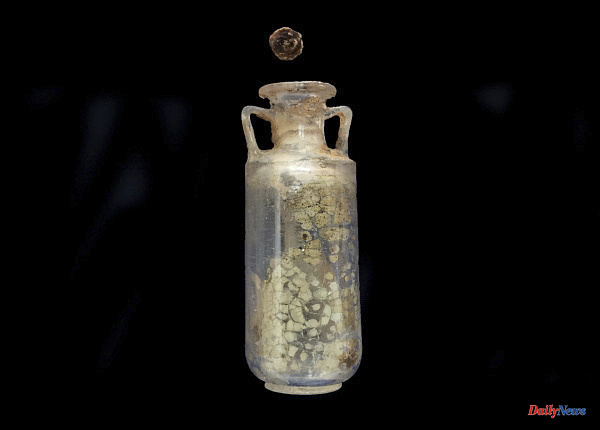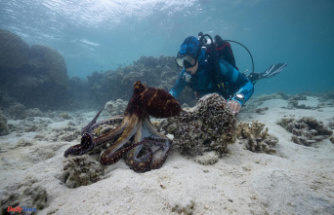A research team from the University of Córdoba (UCO) has identified for the first time the composition of a Roman perfume with a "smell of patchouli" dating back more than 2,000 years after the discovery of a small ointment in Carmona (Seville).
The University of Cordoba has explained that 2,000 years ago in the Roman city of Carmo, the current Carmona, someone put an "ointment in a funerary urn" and now, twenty centuries later, the research team, led by the professor of Organic Chemistry José Rafael Ruiz Arrebola, in collaboration with the Carmona City Council, has been able to chemically describe the real components of a first century AD perfume.
The remains of the perfume, found in 2019 during an archaeological intervention in a mausoleum located in the construction of a house on Calle Sevilla, had been kept solidified inside a container carved from quartz, which was still perfectly sealed.
As explained by the municipal archaeologist of Carmona, Juan Manuel Román, it was a collective tomb, possibly belonging to a family with high purchasing power, in which, in addition to numerous objects related to funerary rituals, the funerary urns of six adult individuals, three women and three men.
In one of the urns, made of glass, over the cremated bone remains of the deceased, in this case a woman between 30 and 40 years old, a cloth bag containing three amber beads and a small bottle or ointment of rock crystal (hyaline quartz) carved in the shape of an amphora.
Usually, perfume containers used to be made of blown glass and, on very few occasions, specimens made of this material have been found which, due to their characteristics and difficulty in carving due to their hardness, made them highly sought after and extremely expensive.
In addition to the singularity of the container, the really extraordinary fact was that it was perfectly sealed and that the solid residues of the perfume had been preserved inside, which has allowed this investigation to be carried out.
Professor Ruiz Arrebola stresses that the use of dolomite, a type of carbon, as a stopper and the bitumen used to seal it were the key to the magnificent state of conservation of the piece and its contents.
To find out what the perfume was made of, different instrumental techniques have been used, such as X-ray diffraction and gas chromatography coupled with mass spectrometry, among others.
According to Ruiz, from the analyzes it has been possible to determine that the small cylindrical stopper was made of dolomite (limestone) and that bitumen was used for its perfect fit and hermetic seal.
Regarding the perfume, two components have been identified, such as a vegetable base or binder, possibly olive oil, and the essence itself.
In this sense, according to the results of the chemical analyzes carried out by the University of Córdoba, Rome "smelled of patchouli", since this essential oil was obtained from a plant of Indian origin, Pogostemon cablin, widely used in perfumery. current and of whose use there was no record for Roman times.
On the other hand, the monumental characteristics of the tomb where it was found and, above all, the material in which the container that contained it was made, suggest that it was a product of high value.
This research represents a milestone for the field of perfumery from Roman times and the use of patchouli as an essential oil, while more studies are currently being carried out on other singular materials preserved in the Carmonense mausoleum and on which it is hoped that results will be obtained in brief
According to the criteria of The Trust Project












